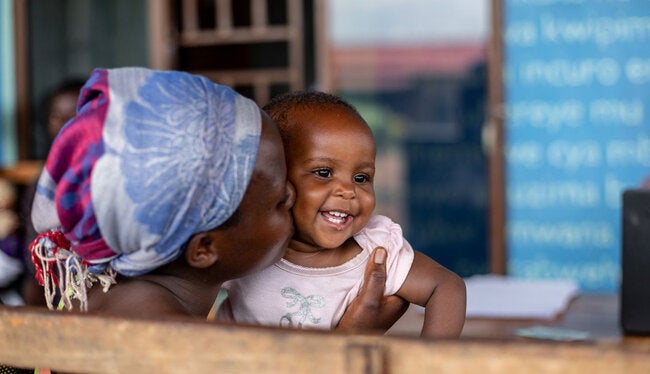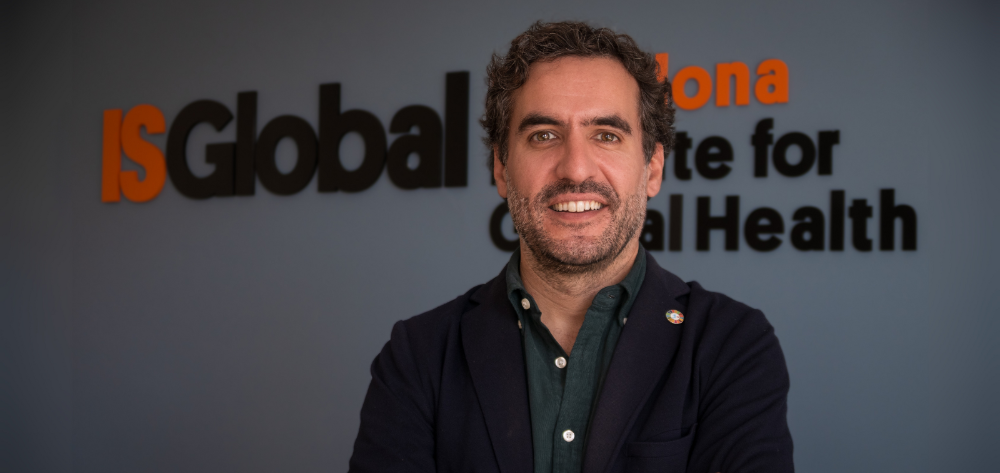
Doctoral thesis defended on December 21, 2023 in the Department of Economic Analysis and Finance of the University of Castilla la Mancha, directed by Professor Dr. D. Raúl del Pozo-Rubio (University of Castilla La Mancha), Professor Dra . . Ms. Marta Ortega-Ortega (Complutense University of Madrid) and Professor Dr. Francisco Escribano-Sotos (University of Castilla La Mancha). She obtained the outstanding grade-Cum Laude. Court: Dr. Dolores Jiménez-Rubio (University of Granada), Dr. Pablo Moya Martínez (University of Castilla La Mancha) and Dr. Beatriz Rodríguez-Sánchez (Complutense University of Madrid).
Introduction
Spain currently has a universal health protection system that provides citizens with broad coverage in health services. Furthermore, this National Health System (SNS) is in the top positions in studies that analyze the quality of healthcare worldwide.
This fact influences Spain to have one of the best data on life expectancy at birth globally, among other health indicators. However, not all the health services that a user may need are covered by said health system publicly and free of charge, sometimes having to access them through out-of-pocket payments, which in some cases can result in households . what previously published literature calls financial catastrophism. Or what is the same, allocate an amount of income when accessing a service greater than a certain threshold.
Goals
The objective of this doctoral thesis is to try to calculate, evaluate and assess the quantity and intensity of family catastrophism and the impoverishing effect that Spanish families endure when accessing these non-free health services, in addition to analyzing its evolution over time. throughout the historical series 2008-2015. A long period of time, in which the global economic crisis of 2008 and the consequences on the Spanish economy had an impact, in addition to the legislative reforms and health investment restrictions in subsequent years.
Methodology
To carry out the research, data from the Family Budget Survey of the National Institute of Statistics of Spain was used for the years from 2008 to 2015, which collects data from a total of 175,943 households.
The methodologies proposed by Wagstaff and van Doorslaer (2003), facing the equivalent income of the households in the sample to health payments, establishing the regulatory thresholds of 10, 20, 30 and 40%. Yeah It considers as catastrophic those homes that exceed each of the established thresholds, as can be seen in example 1.
Example 1: Application of the Wagstaff and van Doorslaer methodology for calculating financial catastrophism.
Subsequently, ordered logistic regressions are carried out to evaluate the statistical association and marginal effects on the risk of catastrophism and household demographic variables (gender, age, place of residence, income level, among others), and concentration indices are also calculated by rental levels.
Results
Chapter 1: Financial catastrophism of families associated with out-of-pocket health payments in Spain during the period 2008-2015
The first chapter (and article) analyzes the financial catastrophism of households due to out-of-pocket health payments, calculating their incidence and intensity, in addition to the sociodemographic variables that influence said data.
The results of the first chapter show a certain stability during the series, which can be interpreted as a sign of robustness of the SNS through the economic crisis, although the catastrophizing data for health payments are not negligible. Well, as we can see in graph 1, an average of close to 20% of households dedicated at least 10% of their income to payments for access to health services, reducing to 4% of households for the highest threshold of the 40. %. Furthermore, the incidence decreases vigorously as we raise the established threshold, since the SNS protects against large outlays by households.
Graph 1: Incidence in percentage of financial catastrophism due to health payments in Spain for the thresholds of 10, 20, 30 and 40%, years 2008 to 2015. Own elaboration

Although there is a health system with extensive coverage, there is impoverishment in Spanish households due to health payments in Spain – an issue that may be overlooked in the public debate.
Table 1 indicates that regarding the influence of demographic characteristics on the risk of suffering financial catastrophism at the highest threshold of 40% in 2015, there was a greater risk when the head of the household is a woman, aged over 85. years, a married marital status, medium or high educational level, retired/pensioner employment status, low income level and residence in an urban area and in a community with medium or high GDP per capita.

Table 1: Statistical significance and marginal effects of the sociodemographic variables of financial catastrophism due to health payments in Spain for the 40% threshold, year 2015. Own elaboration
Chapter 2: Financial catastrophism derived from out-of-pocket payments for oral health in Spain.
The second chapter, recently publishedanalyzes the financial catastrophism of households due to out-of-pocket payments for dental health to assess their weight and their influence on the total amount of impoverishment due to health payments and their concentration by income levels.
The results of this second chapter show us that, in a significant part of the cases in which catastrophic payments are incurred, the cause is access to dental services, since this area has little public coverage within the health system.
As we can see in graph 2, on average, 7% of households in Spain allocated 10% or more of their income to payments for dental health, this percentage decreasing to 2% if we raise the threshold of 40%.

Graph 2: Incidence in percentage of financial catastrophism due to health payments, dental health payments in Spain for the thresholds of 10, 20, 30 and 40%, years 2008 to 2015. Own elaboration
Furthermore, it should be noted that these catastrophic effects tend to focus on the lowest income strata of Spanish households, as we can see in the negative values shown in Table 2, which shows the concentration indices for the years 2008, 2011 and 2015.

Table 2: Catastrophizing concentration indices for dental health payments in Spain in the years 2008/2011/2015. Own elaboration
If we focus on the variables that make the 40% threshold more vulnerable to catastrophizing for dental health payments, for the year 2015 we find that in this case some variables are similar to those in chapter 1, finding similarity in terms of being retired/ pensioner, low income level, and reside in an urban area and in a community with a medium or high GDP per capita; However, the head of the household being a man, under 40 years of age, single, separated and widowed, and a low and medium educational level make the results found different.

Table 3: Statistical significance and marginal effects of the sociodemographic variables of financial catastrophism due to dental health payments in Spain for the 40% threshold, year 2015. Own elaboration.
Chapter 3: Financial catastrophism due to out-of-pocket payments in general and dental health in Spain: regional evidence
The third chapter, collected in ArticleFor its part, it analyzes the financial catastrophism for dental health payments by autonomous communities, an important nuance given the decentralized nature of health services in Spain.
In this work we found that access to dental health services is the main cause of catastrophism within the total. That, in fact, as seen in graph 3, its attributable percentage increases as we increase the regulatory threshold (from almost 40% at the 10% threshold to more than 50% for the 40% threshold), which leads us to interpret that the disbursements for access to these services are high.

Graph 3: Percentages of incidence of health and dental catastrophism of the total catastrophism in Spain for the thresholds of 10, 20, 30 and 40%, year 2015. Own elaboration.
It can also be seen from Table 4 that, although there are differences between the different autonomous communities, a significant percentage of catastrophism occurs in all of them due to access to dental services, and even in those that have some type of legislation or autonomous regulations (all less Valencian Community, La Rioja and Asturias). It also shows us that there are significant differences in the amounts of catastrophic dental payments between autonomous communities, although in most cases with concentration indices of negative sign they corroborate the findings of chapter 2.

Table 4: Concentration indices of out-of-pocket payments in dental health by autonomous communities in Spain, years 2008/2011/2015. Own elaboration.
It should be noted that the heterogeneity of the treatments offered publicly in the different autonomous communities is such that even the Ministry of Health prepared a report on the diagnosis of the situation in 2020 in which it detailed the variability in terms of differences in legislation, existence of oral health programs, existence of a unit or person responsible for oral health, existence of a children’s dental care program, among other issues. An issue that a priori may indicate that there is some room for improvement in the cohesion of the SNS to guarantee equity in its service to citizens.
Conclusions
The studies carried out allow us to affirm the effectiveness, strength and quality of the SNS, also maintaining its financial protection for citizens during the economic crisis; However, there are figures of financial catastrophism that may be overlooked. Two key results of my research would be:
- That there are certain demographic characteristics that make certain households more vulnerable, and that perhaps it would be interesting to protect them from such impoverishing payments in order to increase the equity of the system.
- That dental health is the great cause of catastrophism, an area of health that barely has public coverage, which could be considered a health dysfunction and that may even result in a social problem later on.
In short, this doctoral thesis shows that it would be advisable to carry out an equity analysis of the Spanish SNS. Well, although it works with some efficiency achieving good results, there are areas with little public coverage which means that many households in the country will, at times, have to face a series of catastrophic payments. It would also be of interest to carry out continuous evaluations on the effect of financial catastrophism on families, so that these data count when designing new public policies by decision-makers and are aimed at increasing the equity of said system as a criterion. . of its quality.






